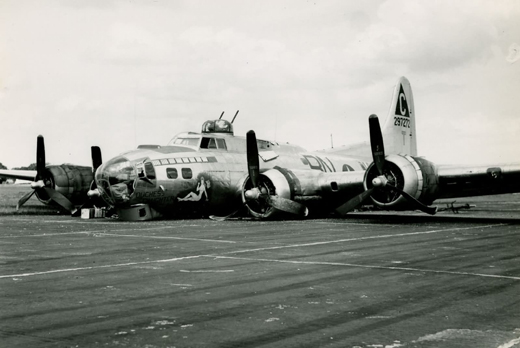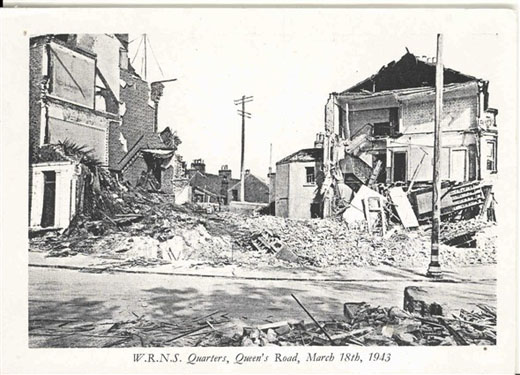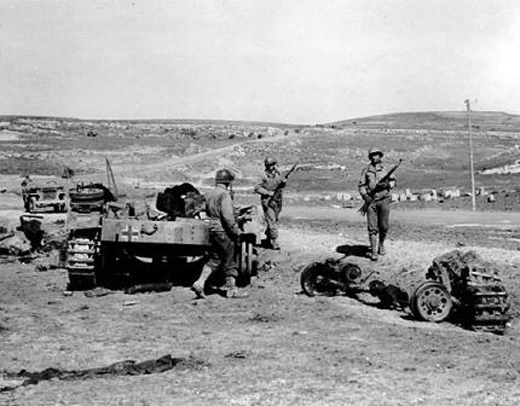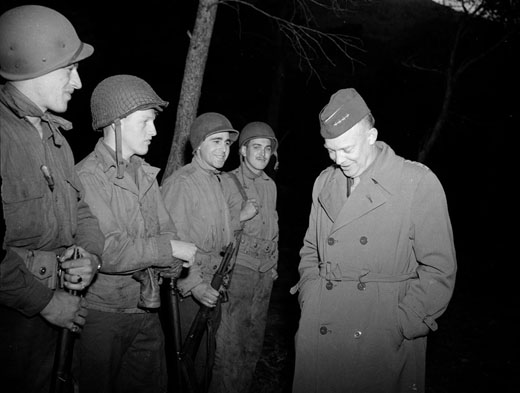Air Operations, Aleutians
6 28th Composite Bomb Group B-24s, 6 B-25s, and 12 343rd Fighter Group P-38s, based at the airfield on Adak, attack Kiska, as do 12 Amchitka-based P-38s.
[Air Operations, Bismarcks
43rd Heavy Bomb Group B-17s mount individual attacks against a launch at Talasea and barges near Cape Gloucester.
[Air Operations, CBI
BURMA- 16 7th Heavy Bomb Group B-24s attack a bridge at Pazundaung.
- 8 341st Medium Bomb Group B-25s attack a bridge at Myitnge while 8 other B-25s attack antiaircraft emplacements around Myitnge.
- 16 51st Fighter Group P-40s attack Japanese Army ground troops at Seniku. 7 P-40s attack Nalong.
Air Operations, Europe
- There is an unsuccessful night raid on Norwich.
- B-17s and B-24s attack the Vegesack U-boat building yard near Bremen. There is fierce fighter opposition.
Wheels-up Landing of B-17G |
 |
Daylight Ops:
- 2 Venturas attack an oil refinery at Maasluis but bombs miss the target. 12 other Venturas turn back from raids to targets in France. There are no losses.
Air Operations, New Guinea
- B-24s from the 90th Heavy Bomb Group attack Madang while 1 B-24 attacks Langgoer and Timoeka.
- 18 Japanese bombers, escorted by 32 fighters, mount an uncontested attack against Porlock Harbor.
Ruins of the WRNS Quarters |
 |
Air Operations, Tunisia
NATAF fighters fly numerous recon and sweep missions, and attack many ground targets of opportunity.
[Battle of the Atlantic
In the ongoing battle U-boats against Convoy HX-229, U-221 torpedoes the US freighter Walter Q. Gresham (7191t) losing 23 crewmen and 5 of the 26 Armed Guard. 42 survivors are picked up by the British corvettes Pennywort and Anemone.
[CBI
BURMAWingate's column crosses the Irrawaddy south of Inywa, the last group to do so. The Japanese have now assembled considerable forces to hunt the Chindits and their operations are being increasingly circumscibed. In the Arakan the more regular British operations are not going well either. Htizwe falls to a pincer attack and on the Mayu Peninsula an attack by the 6th Bde of the British 2nd Div and the 71st Indian Bde on Donbaik fails. They then have to withdraw north on account of enemy infiltration. The plans for cutting the Mandalay-Lashio rail line are abandoned for now.
[Diplomatic Relations
French Guiana formally disassociates itself from Vichy and declares for the Free French.
[Eastern Front
Troops from SS Gross Deutschland Div attack. Belgorod, on the Donets River northeast of Kharkov, in the last act of von Manstein's offensive. In this phase the Soviets have lost 40,000 casualties and at least 600 tanks. The whole operation has been an unqualified technical success for the Germans, but cannot make up for their 1,000,000 dead since November 1942. As activity begins to die down all along the front in the mud of the spring thaw, German and Soviet attention begins to be drawn toward the Soviet salient aroung Kursk.
SOUTHERN SECTORThe Grossdeutschland Division and SS Panzer Corps launch a full-scale attack upon Belgorod, throwing back 69th Army and taking the town. The Stavka immediately move up the 6th Guards Army (formerly 21st Army) to support the failing 69th while the 1st Tank Army assembles at Oboyan.
The loss of Belgorod ended the German counteroffensive in the Ukraine. The onset of the spring thaw brought movement to a halt and prevented Manstein from continuing his drive north to re-establish a strong junction with Army Group Center. Despite this, Manstein had pulled off an amazing feat, restoring the German southern wing and inflicting a salutary lesson upon Stalin and the Stavka.[
|
|
India
A group of B-24 bombers arrives to reinforce the American 14th Air Force.
[Lebanon
A provisional government is set up under Dr Ayoub Tabet.
[North Africa
TUNISIAGen Patton's II US Corps takes Gafsa and pushes forward toward El Guettar which they occupy as the Axis troops fall back.
The US II Corps' 1st Div, continuing its attack with the attached 1st Ranger Battalion, takes El Guettar without opposition. Very heavy rains immobilize the 1st Armored Div, but plans are made for an attack on Sened Station on the 19th.
In the British 1st Army area, Gen Anderson orders the V Corps, which is reinforced by the 1st Parachute Brigade of the Corps Franc d'Afrique and one Tabor of French Goumiers, to cease their withdrawal and to prepare to recover at least a part of the lost ground as a necessary prerequisite to launching a major assault toward Tunis and Bizerte. The enemy is attacking in the Djebel Abiod area.
GIs Examine Destroyed German Tank |
 |

